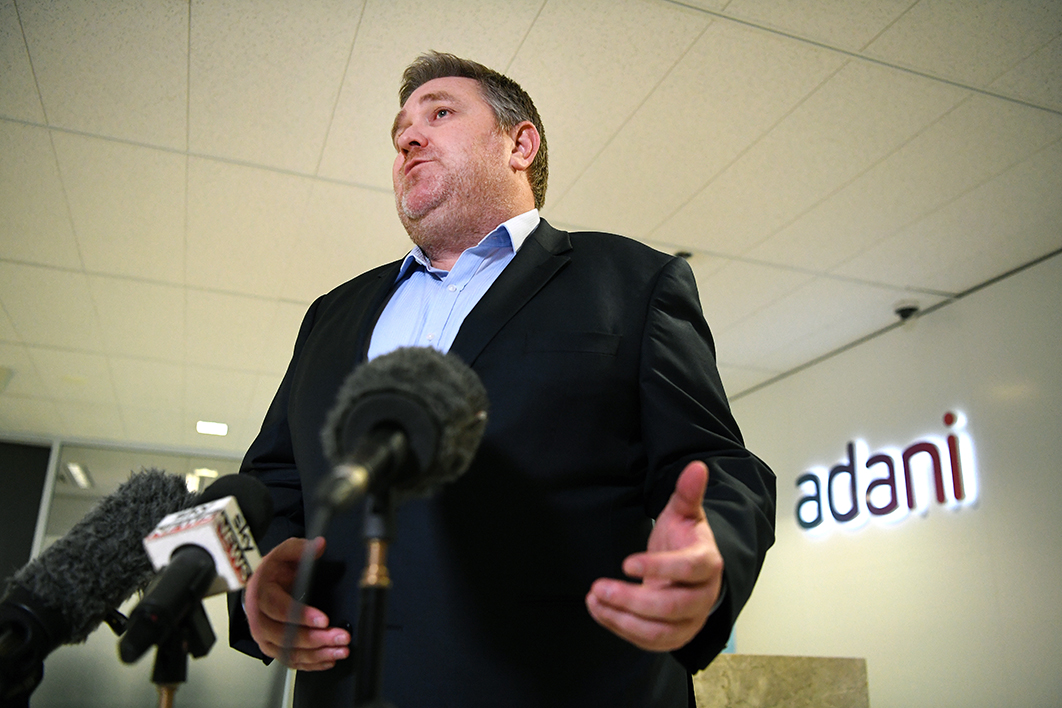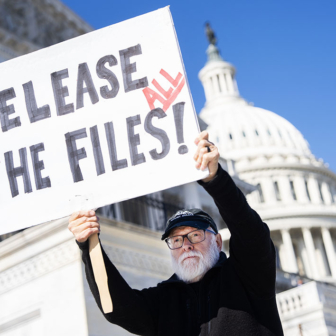It’s a month since Adani received final approvals for its Carmichael mine, and it’s still hard to work out what’s going on at its site and in the Galilee Basin in general. On the jobs front, Adani has been advertising positions in its Townsville office (about sixty jobs, as of today), but that’s barely enough to replace the cuts made last year. There’s no sign that the firm is opening up the thousands of jobs it promised.
Despite the company’s upbeat announcements, the project still seems to consist entirely of tree-clearing and road-building. Photos published recently show the same small group of vehicles that has been on the site since January.
To get past this stage, and lacking significant in-house experience of major projects, Adani needs partners, not least engineering design firms and construction contractors. And even if no external funds were needed, the project would need insurance, which is getting harder to come by.
Adani claims it has insurance lined up, but declines to say which firm will provide it. Most of the leading European insurers, and an increasing number in Asia and the United States, already have policies that preclude lending to new coal projects like Adani. QBE, Australia’s leading insurer, has joined this group. New divestment announcements are appearing every week.
Assuming Adani’s claim about insurance is true, the obvious explanation is that the unnamed insurer is worried about the reputational cost of being associated with such a toxic project. Indonesian coalminers are already facing similar problems in obtaining finance and insurance. Taking on a risk like Adani only makes sense for an insurer if premiums are higher than the usual rate for a mining project. Given the shrinking pool of potential insurers, Adani has little choice but to pay top dollar.
Similar is true of the engineering and design work for Adani’s reconfigured project. It’s widely rumoured that Australian-based multinational firm GHD will get the job, but so far it has refused to comment. The firm is already under pressure to repudiate the project.
As well as reputational damage, GHD needs to consider the fact that Adani has burned a string of previous contractors. In 2015, up to forty engineers at WorleyParsons’s Brisbane office were abruptly told their services were no longer required. A $2 billion contract with Downer EDI, announced with great fanfare in in 2015, was cancelled a couple of years later. Adani is still fighting its last partner, AECOM, over a payment of $12 million. AECOM must surely be regretting ever getting into bed with Adani, having wound up losing its money as well as its reputation.
Any firm looking at this history would want a high price and money up front for its services, and would try to keep its involvement as quiet as possible. Which raises the question of how a project that was marginal to begin with will manage to pay above-market prices for everything it needs.
Adani is presumably counting on favourable access to the Indian market, where the firm’s chairman, Gautam Adani, is a prominent friend of India’s prime minister, Narendra Modi. But no government lasts forever, and short-term political connections aren’t a sensible basis for an investment that is supposed to last thirty years.
Outside India, the prospects for Australia’s thermal coal have never been worse. Of our main Asian markets, South Korea has committed to reducing reliance on coal, Japan has cancelled much of the expansion in coal planned after the Fukushima disaster, and China is reducing its reliance on imports — especially (apparently for foreign policy reasons) imports from Australia.
Further market pressure is arising from supplies diverted from contracting markets elsewhere. Most European countries have committed to a complete phase-out of coal-fired power. Despite the efforts of the Trump administration, coal is projected to provide only 11 per cent of US electricity supply by 2030, leading suppliers in Russia and North America to seek export markets in Asia.
In these circumstances, the only way coalmining can stay profitable is if high-cost producers leave the market. That’s exactly what Australian miner Whitehaven says it is counting on. But if the market is so weak that existing mines must be closed, how can it make sense to begin mining relatively low-quality coal that needs to make a long rail journey to port? Adani has yet to answer that fundamental question. •




